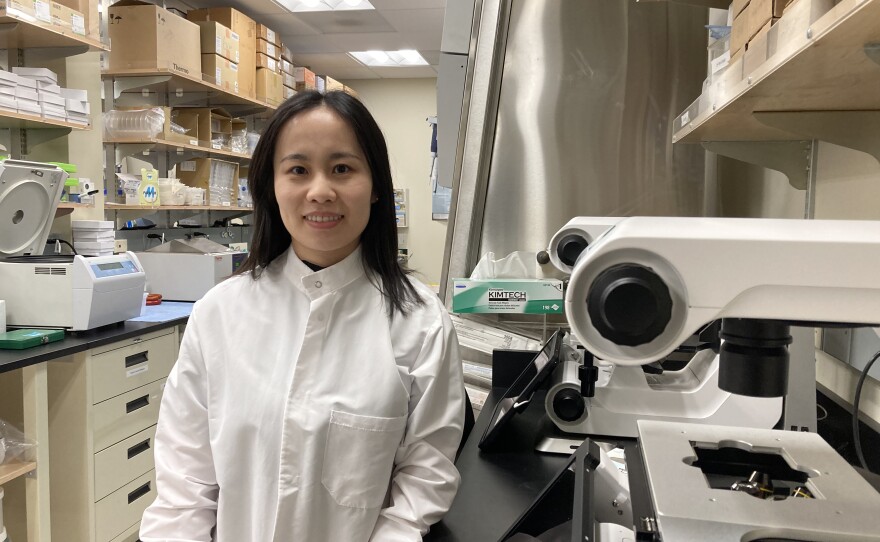Organoids, made of brain cells, are growing at the Salk Institute’s tissue culture lab. They are kept in an incubation locker, and they’re visible to the naked eye as they float in a petri dish. When they’re done growing, they will be about five millimeters across.
When combined with other cell constructions, they will be like a tiny human brain.
“And the interesting thing is I’m just talking about the neural part of it, the brain part of it,” said Rusty Gage, a professor of genetics at the Salk Institute. “There are liver organoids. There are gut organoids. There are organoids for just about every organ in the body.”
Organoid creation at Salk begins with a skin cell that’s turned into a pluripotent stem cell. Throw a few molecular switches, and it becomes a brain cell.
Meiyan Wang is a neuroscience postdoc at Salk Institute. She said studying organoids is a great first step in life-science research.
“We can grow them and expand a lot of organoids for a lot of screening and studies in vitro,” Wang said. “So we can identify a molecular pathway and then we can go back to the in vivo animal models to test this, so we can already have a theory before we go into animals to do these studies.”

The research paper, published in Nature Biotechnology, shows how the Salk lab devised a way to create and integrate very common brain cells called astrocytes. They are crucial to the work of neurons, but they were poorly represented in earlier brain organoids. The study further showed how some astrocytes were promoting brain inflammation.
Wang said inflammation is involved in lots of well-known brain disorders.
“For example, Alzheimer’s disease, Parkinson’s disease, ALS; so these are all the possible neurological diseases we can study using this model,” Wang said.
As the use of organoids becomes more common, Rusty Gage said their clinical use could mean creating an organoid to serve an individual patient.
“This sort of epitomizes what people are calling ‘personalized medicine.’ Because we have your cells here, and they can be tested with treatments and understand the mechanism,” Gage said. “But it's of your cells, not of a model system or an animal system.”
Could human organoids replace test animals in the lab? Maybe not. In vivo research, testing on a live creature, is still needed in addition to in vitro lab studies. But Gage said it is a subject of discussion.
“This is actually a debate that’s being had right now in the Federal Drug Administration," Gage said. “How much work do we need to do in animals and how much can we do in human tissues alone?”
He added it’s a debate that’s not yet settled.





